Why cook starch paste and how to do it correctly? 3 proven recipes
Most modern Russians have no idea how to cook a paste from starch and why it is needed. But just some 30–50 years ago, it was used to form the wallpaper on the walls of 99% of houses and apartments. Paste is a completely natural and even edible glue.
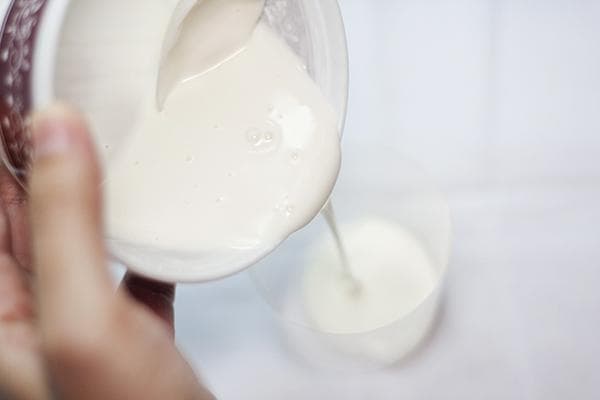
What is a paste and why is it needed?
Paste is a jelly-like mass that has the properties of glue. It is obtained by boiling starch in water. Starch is used both in pure form and in the form of flour or even grain. When starch grains come into contact with boiling water, they rupture, absorb water, and eventually form a spongy mass.
Pastes made from different types of starch have their own advantages and disadvantages:
| From corn starch | High curing ability. Slightly cloudy. Cooked at high temperature. It may not spoil for a week or more. |
| From wheat starch (regular flour) | Medium curing ability. Does not spoil for several days. A little cloudy. Widely used in bookbinding. It is not boiled, but poured in a thin stream into boiling water. Otherwise, after cooling, the paste will lag behind. |
| From potato starch | Transparent, clean. Low curing ability. It changes easily in air and sours quickly. Cooking does not require high temperatures. |
| From rye flour | It has an enviable strength when mixed with turpentine (resin). Resistant to dampness. It can be used for pasting stoves, gluing new wallpaper over old ones. |
Starch pastes have a wide range of applications. In small concentrations they are used to prepare jelly and puree soups. In laboratories they play the role of reagents. But pastes are most in demand in gluing paper and cardboard: when gluing wallpaper, making papier-mâché, and various children's crafts.
Paste is a perishable product. When it comes into contact with air, it sours, forming lactic acid. Therefore, it is used immediately after preparation. You can add salt, salicylic acid or other additives to the solution. Then the shelf life of the mass will increase.
How to cook paste?
To prepare the glue you will need aluminum or enamel dishes, water, starch or flour. The cooking process is quite simple:
- Dissolve starch (flour) in a small amount of cold water (1:1).
- Pour water into a large saucepan and place on fire.
- When it starts to boil, pour in the flour solution in a thin stream, stirring the water vigorously.
- Once the mixture reaches the desired consistency, turn off the heat and cool the container in water (otherwise the glue will continue to thicken).
- Leave the paste to sit for 1–2 hours.
- Strain through cheesecloth (sieve) to get rid of lumps.
The standard proportions are: 2 parts starch to 8–10 parts water.
Wallpaper Recipes
For wallpapering, it is preferable to use a paste made from rye and wheat flour (flour contains 75% starch).
Potato starch paste is not waterproof and easily rots in damp conditions. In addition, the strength of the adhesive seam is very low. This composition can only be used to stick thin paper wallpaper and use it to prime the ceiling and walls.
The denser and heavier the wallpaper, the more tenacious the glue should be.To increase tenacity, add an additional ingredient to the cooled mass (approximately 20 g per 1 l):
- wood glue - for dark wallpaper;
- PVA glue - for light colors;
You need to be very careful with wood glue and rye flour: they leave brown marks.
To make the paste water-resistant, calcium chloride (40 g per 1 liter) is added to the paste during the cooking stage.
Starch and water are edible products. It is not surprising that paste is susceptible to attack by all kinds of bugs and mold. It is very important to give it antiseptic properties by mixing starch with copper sulfate (1 g for every 100 g of dry matter).
From potato starch
The advantages of starch paste are low cost, transparency and speed of preparation. It is used for lightweight wallpaper and does not stain.
Instructions:
- Dilute 0.5 kg of starch in 0.5 liters of cold water.
- Boil 4 liters of water in a saucepan and turn off the heat.
- While vigorously stirring the water, pour in the solution in a stream.
- After 2 hours, pass the glue through cheesecloth.
Add salicylic or boric acid to the finished glue (1 tablespoon per 1 liter) so that it does not deteriorate within 3–5 days. Otherwise, the mass will have to be thrown away after 10 hours.
From starch and flour
To prepare wallpaper paste, it is recommended to mix starch with flour. Then it turns out stronger.
Instructions:
- Dissolve 100 g flour and 100 g starch with 200 ml water.
- Heat 0.8 liters of water in a saucepan and reduce the heat to low as soon as bubbles appear.
- Pour in the flour mixture, stirring constantly.
- Cook over low heat, without boiling, for 3 minutes.
- Cool and strain the solution.
Approximate paste consumption:
- 10-15 g per m2 – for light wallpaper;
- 25-35 g per m2 – for heavy ones.
If starch is placed in the oven and heated for more than 2 hours at 160 degrees, it will turn yellow and turn into dextrin. It is also used to create glue. Dextrin is diluted with boiling water in a ratio of 1:3. For every 100 g of powder add 30 g of sugar. This glue dries very quickly and holds the wallpaper tightly.
High strength paste
If you need to weld super-strong and waterproof glue for heavy wallpaper, use the following recipe:
- Dilute 40 g of calcium chloride in 600 ml of water and bring to a boil.
- Separately mix 400 g of starch and 0.4 liters of water.
- Pour the calcium chloride solution into the water and starch mixture, stirring.
- Add the glue base to 4 liters of hot water. Cook for 2-3 minutes over low heat.
- Cool, let sit for 2 hours and strain.
To check the tenacity of the paste, rub a drop between your fingers and try to smoothly separate them. The harder it is, the better the glue.
Many people do not trust starch paste, preferring modern types of glue. But in vain. Prepared using technology, it firmly adheres non-woven and vinyl wallpapers, not to mention paper ones. And its composition is completely safe and does not cause allergies. Natural glue is often used to glue wallpaper in the rooms of allergy sufferers and small children. Paste is cheap, environmentally friendly and effective!
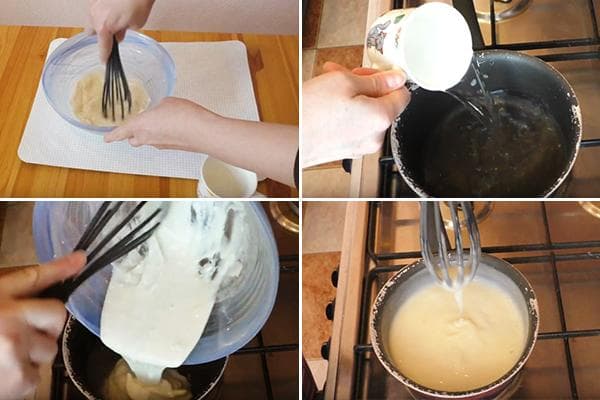
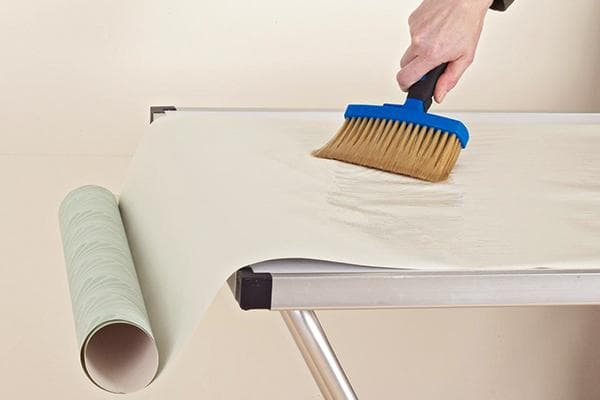
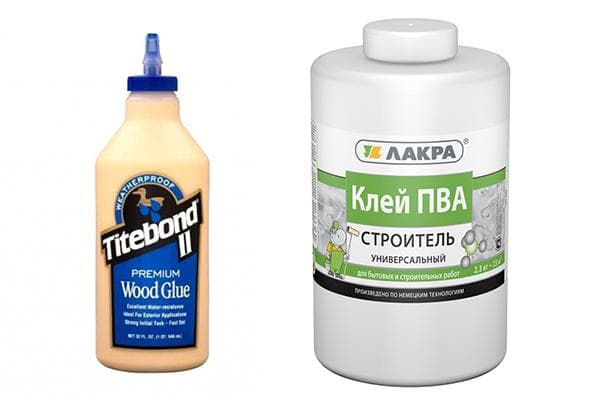
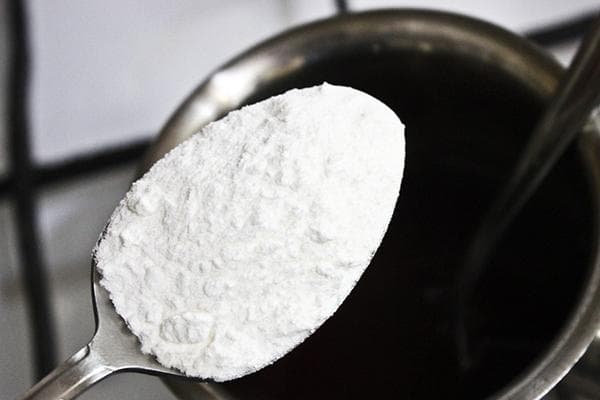
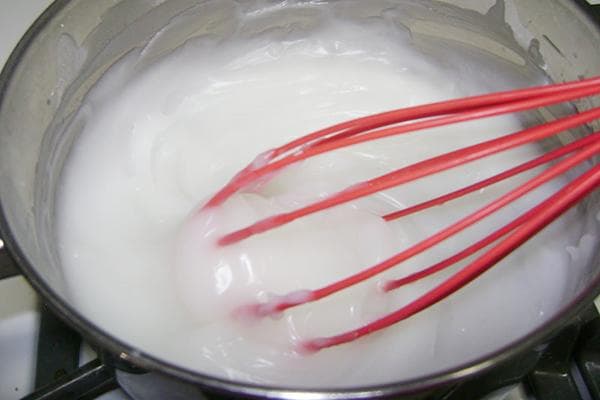
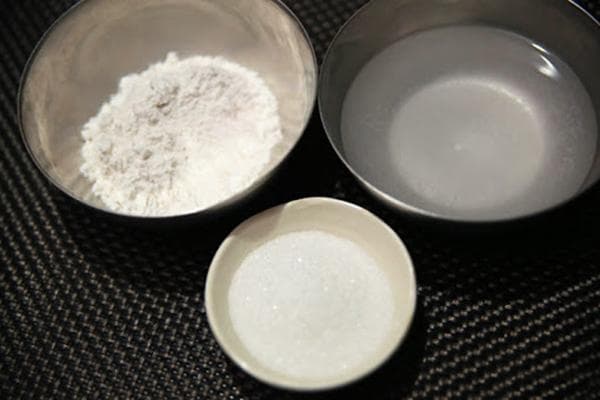
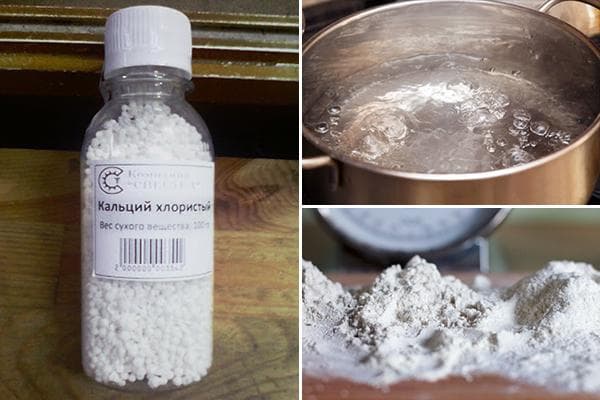
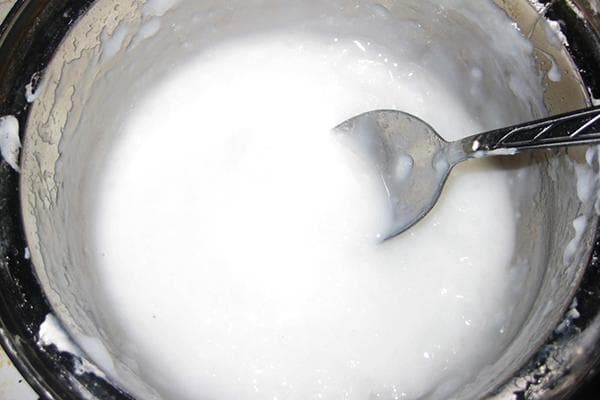
It may be correct to consider ter glue a relic of the past, primarily because of the time required, but the fact that it is cheaper is definitely a fact.
In my opinion, this is an excellent wallpaper glue. Modern adhesives are much more expensive, but the difference is not felt.